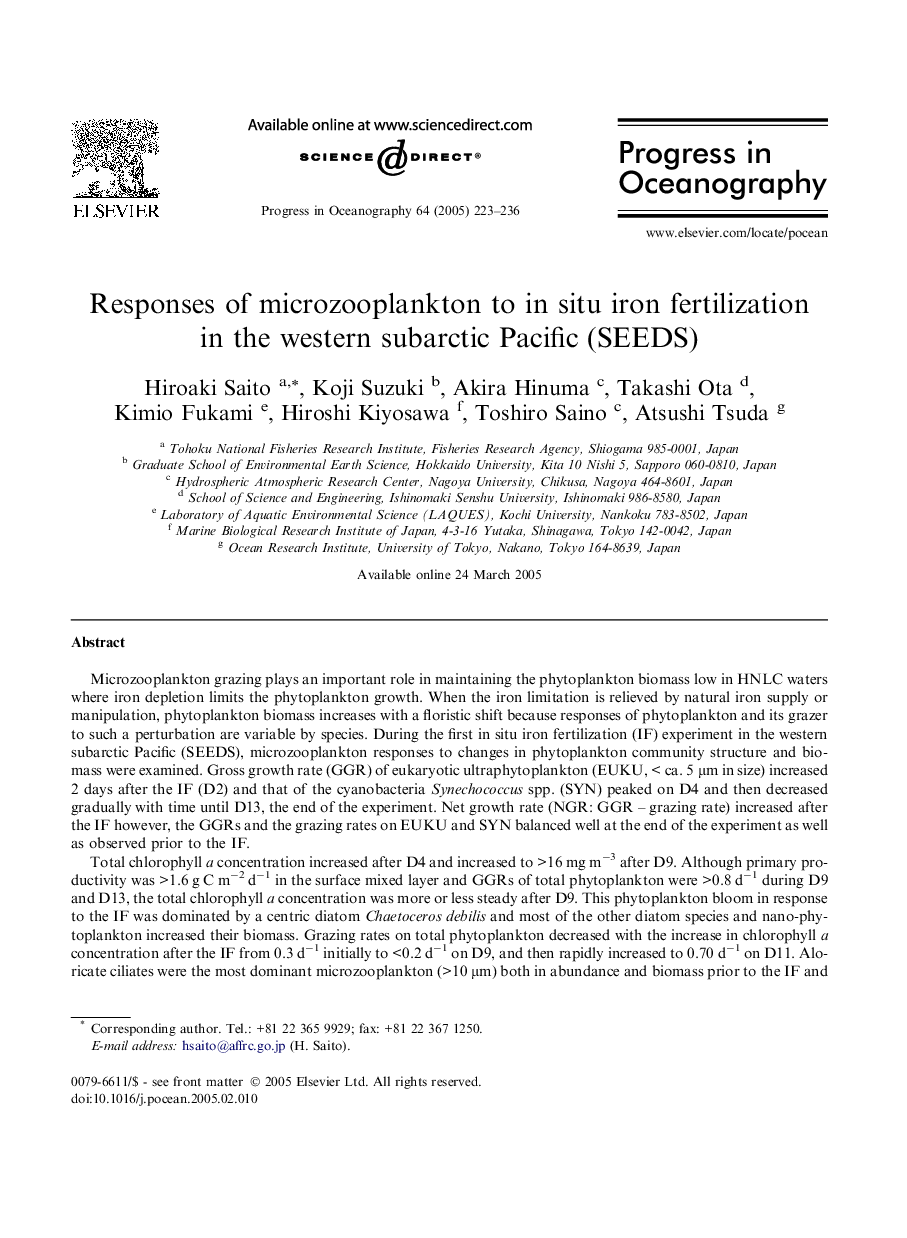| Article ID | Journal | Published Year | Pages | File Type |
|---|---|---|---|---|
| 9485112 | Progress in Oceanography | 2005 | 14 Pages |
Abstract
Total chlorophyll a concentration increased after D4 and increased to >16 mg mâ3 after D9. Although primary productivity was >1.6 g C mâ2 dâ1 in the surface mixed layer and GGRs of total phytoplankton were >0.8 dâ1 during D9 and D13, the total chlorophyll a concentration was more or less steady after D9. This phytoplankton bloom in response to the IF was dominated by a centric diatom Chaetoceros debilis and most of the other diatom species and nano-phytoplankton increased their biomass. Grazing rates on total phytoplankton decreased with the increase in chlorophyll a concentration after the IF from 0.3 dâ1 initially to <0.2 dâ1 on D9, and then rapidly increased to 0.70 dâ1 on D11. Aloricate ciliates were the most dominant microzooplankton (>10 μm) both in abundance and biomass prior to the IF and gradually decreased with the developing diatom bloom. Heterotrophic dinoflagellates, dominated by Gyrodinium spp., increased rapidly after D11. Both the abundance and biomass of heterotrophic dinoflagellates on D13 were 5 times those prior to the IF, and they were the most dominant micrograzer at the end of the experiment. This indicates that grazing by dinoflagellates prevented further development of the diatom bloom after D9, together with limitations of light and iron bioavailability. The present study showed that micrograzers responded to the floristic shift induced by the IF with a time lag and their grazing was an important controlling factor not only on the pico- and nano-phytoplankton but also on the microphytoplankton including chain-forming diatoms. It also showed that heterotrophic dinoflagellate grazing has an important role in the food-web dynamics and biogeochemical cycle after natural or manipulated perturbations in the HNLC western subarctic Pacific.
Related Topics
Physical Sciences and Engineering
Earth and Planetary Sciences
Geology
Authors
Hiroaki Saito, Koji Suzuki, Akira Hinuma, Takashi Ota, Kimio Fukami, Hiroshi Kiyosawa, Toshiro Saino, Atsushi Tsuda,
